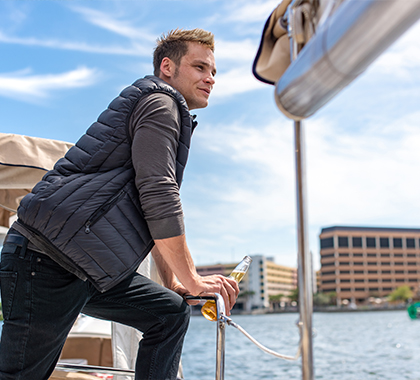How to Measure Your Shoe Size at Home
2024-12-30
The best way to ensure that the shoes you order are going to fit properly, especially if you have wide feet or bunions, is to measure your feet first. Knowing how to measure shoe size accurately helps avoid discomfort, foot problems, and ensures your shoes last longer. Whether you're shopping for sneakers, dress shoes, or boots, understanding how to measure your foot size is important for comfort and style.
If you wear dress shoes that are too big, you are at risk of experiencing balance issues and serious foot problems. Big shoes can cause constant rubbing and friction on your feet, leading to blisters, and can interfere with your natural stride. Ill-fitting shoes, whether too large or too small, can also contribute to posture problems and long-term foot damage. You may even hurt your feet or irritate the skin if your shoes do not fit right.
Thankfully, you can measure your shoe size at home with a tape measure without the need to see a podiatrist or visit a local shoe store. Learning how to measure foot size and how to check foot size is a simple process that guarantees you’ll get the perfect fit every time. This guide will also show you how to measure your foot width and how to measure shoe size with a tape measure to ensure precise results.
Check out these steps to measure your foot size at home:
Before you start, gather these items:
- One or two sheets of paper
- Pencil
- Measuring tape
- Socks you intend to use for the shoe
Trace Your Foot
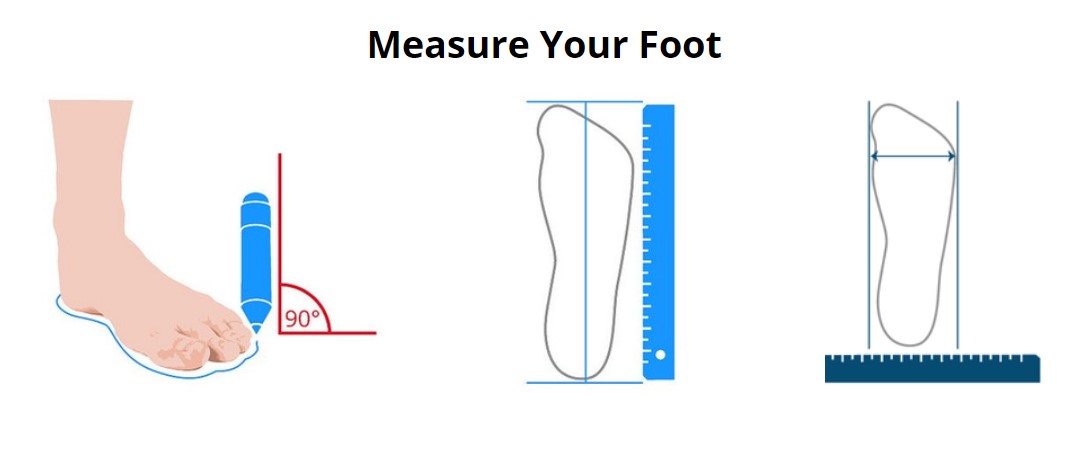
The first step is to trace your foot to size your shoes. Get a piece of paper and place it on the ground. If you have a large foot, use two sheets of paper taped together. Tape the paper on the ground so it doesn't move when you trace your foot. Next, put on the sock you plan to wear with the shoe. At this point, you can now trace your foot. Put your full weight on, as if you are standing normally. It's best if you can have someone who can trace it for you. This helps ensure your foot’s natural spread is captured for a more accurate measurement. It's best if you can have someone who can trace it for you. Either way, slowly trace around your foot with your pen or pencil at a 90-degree angle. This technique helps you figure out how to measure your foot width and overall shoe size. You may want to trace your foot a few times to ensure an accurate shoe size measurement.
Mark the Length and Width of Your Foot
Using a measuring tape, measure the length of your foot. Do this by marking the end of the longest toe and the edge of the heel then measure the distance using the tape. For those wondering how to measure shoe size with tape measure tools, this is the most reliable way to ensure accuracy.
Measure Foot For Shoe Size
Next, measure foot width. Wrap the measuring tape around the widest part of your foot. Then, place your foot on the ground, as if you were standing normally. Knowing how to measure your foot width is especially important for people with wide feet or unique foot shapes.
Locate Your Shoe
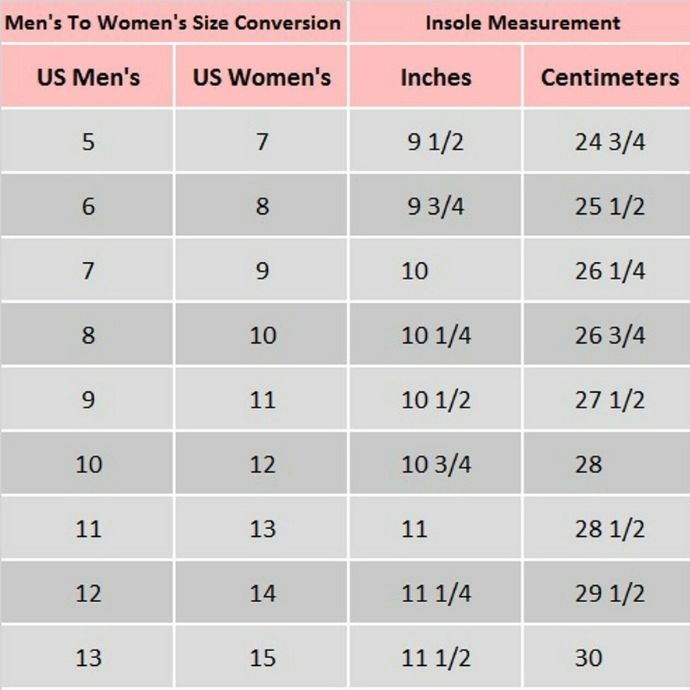
After taking the right shoe size measurements with tape at home, you're now ready to find your perfect fit. This step is the easiest. It's as simple as looking at a chart. Take note that most shoe manufacturers use shoe sizing charts represented in “inches”. Additionally, the shoe measurement chart for women is different from that for men. Knowing how to figure out shoe size accurately will save you time when shopping.
How Your Shoes Should Fit
Getting accurate measurements is the key to finding the right size shoes and avoiding discomfort. Measuring your shoe size helps ensure a proper fit, but it’s also important to try on shoes to see how they feel, as fit can vary depending on the type of shoe you’re buying. For example, knowing how to measure foot size can help you choose dress shoes, sneakers, or boots that feel comfortable and supportive. While measurements give you a good starting point, factors like the material, shape, and purpose of the shoe can affect how they fit. Using a tape measure to determine your shoe size and checking a manufacturer’s sizing chart ensures you’re on the right track. Make sure to measure foot width, especially if your feet are wide or have unique shapes. Whether you’re measuring for sneakers, sandals, or boots, taking the time to get accurate measurements makes it easier to find a pair that fits comfortably. Trying on shoes after measuring helps confirm that they meet your needs and feel right when you walk or stand.
Sneakers and Walking Shoes
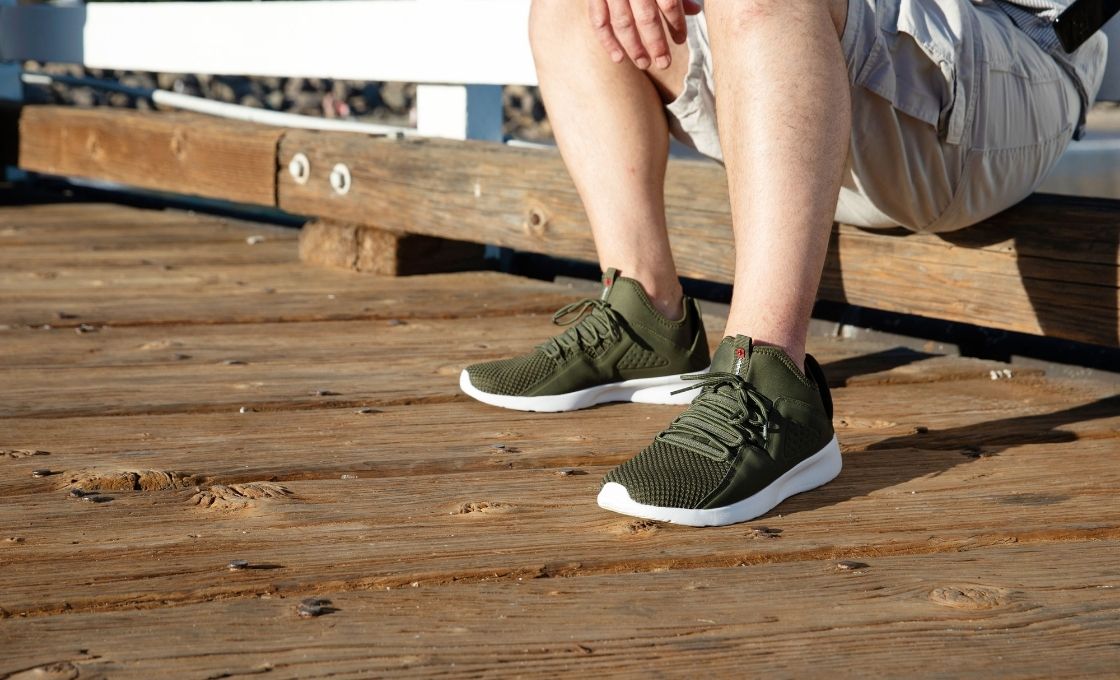
For walking shoes or casual sneakers, look for options with a wide toe box to allow your toes to move freely and avoid unnecessary pressure. Shoes that fit too tightly can restrict blood flow, cause blisters, and lead to long-term issues like bunions or hammertoes. Ensuring there is enough room for your toes to wiggle comfortably helps maintain proper foot alignment and reduces fatigue during daily activities. When choosing sneakers, it’s also important to measure your foot width accurately. If you have wider feet, knowing how to measure your foot width can help you select shoes that offer a better fit without pinching or squeezing. A proper fit prevents friction and provides better overall support for walking or light exercise. Additionally, sneakers with cushioned insoles and arch support are ideal for long hours of wear. Pairing the right measurements with a comfortable design ensures your walking shoes or sneakers can handle your daily routine without causing discomfort. Don’t forget to check both your length and width measurements when selecting the perfect pair.
Running Shoes
When selecting running shoes, focus on finding a snug fit that supports your entire foot while leaving enough room for your toes. A proper fit ensures stability and helps prevent issues like blisters, calluses, or toenail damage during physical activity. To check if the fit is correct, press down on the toebox with your thumb—there should be about half to a full thumb’s width of space between your longest toe and the end of the shoe. Running shoes are often designed differently than casual or dress shoes, so you may need to go up half a size from your regular footwear. This extra space accommodates foot swelling that occurs during long runs and provides added comfort. Measuring your shoe size accurately, including both foot length and width, is especially important for running shoes to ensure proper support and cushioning. Shoes with the right fit also improve your stride, reduce impact on your joints, and prevent unnecessary strain on your feet and legs. Whether you’re training for a marathon or going for a quick jog, getting the right measurements and fit will enhance your performance and overall comfort.
Boots
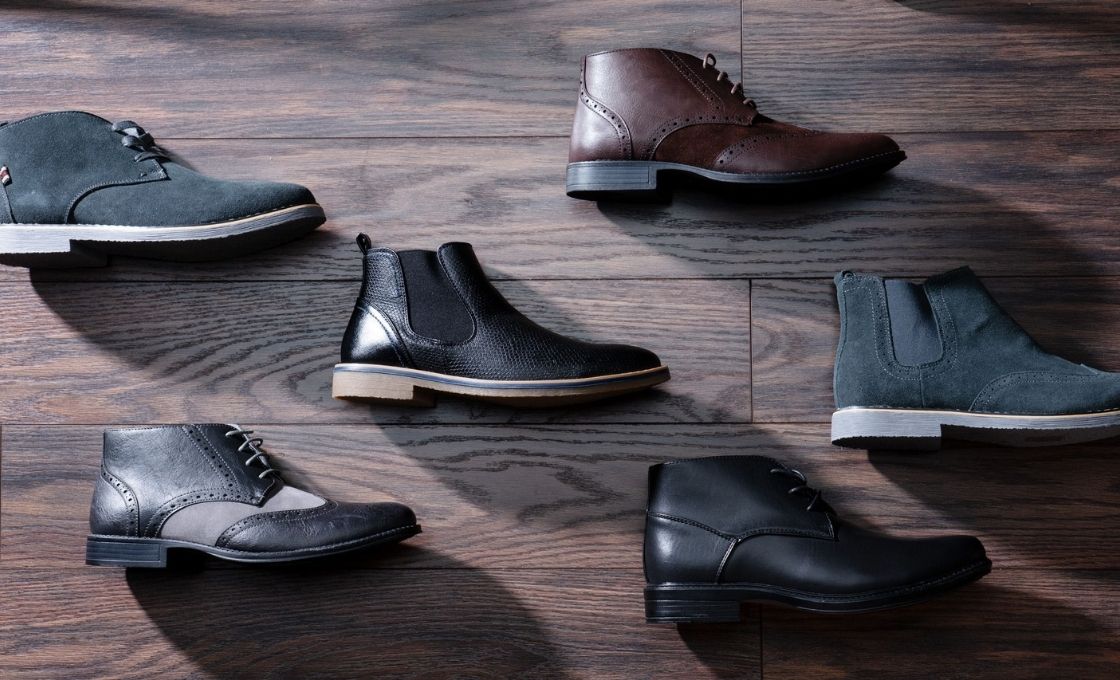
Boots, especially high-calf boots, tend to sit high on the leg. That said, you want to make sure that the opening at the calf is large enough for your leg to slip in comfortably. If the heel slams down when you walk, it could mean that your boots are too large. If shopping for winter boots, it may be helpful to choose a shoe with a slightly wider fit. That's because winter shoes are worn with thicker socks. When wearing casual boots, your heels should not come out of the boot or rub against the back of it.
When choosing winter boots, consider opting for a slightly wider fit to accommodate thicker socks and ensure warmth during colder months. Measuring your foot width is especially helpful for winter footwear, as a good fit prevents discomfort during extended wear. If the heel slams down or moves excessively as you walk, it’s a sign that the boots are too large, which can cause blisters and make walking unstable.
For casual boots, your heel should stay securely in place without slipping or rubbing against the back of the boot. This ensures comfort and prevents irritation, especially if you’ll be wearing them for long periods. Measuring both the length and width of your foot helps you find boots that fit well and provide the right level of support for different activities. Whether it’s ankle boots, hiking boots, or winter boots, getting accurate measurements will make all the difference in how they feel and function.
Sandals
Walking sandals should fully support your feet while offering a comfortable and secure fit. If your toes are hanging over the front of the shoe or the edge of the sole, it’s a clear sign that your sandals are too small. Learning how to measure shoe size accurately can help you avoid these issues and find sandals that fit properly. Properly fitted walking sandals provide enough room for your toes and heels to rest on the sole without any overhang.
For high-heel sandals, it’s important to ensure there is sufficient room at both the front and back of your foot. High-heel sandals should fit snugly to hold your foot firmly in place. If your foot is sliding up or down, it may mean the sandals are too loose. Knowing how to measure foot size, including foot width, can help you select sandals with the right support and fit. Opt for styles with adjustable straps or back straps if you find your sandals moving too much while walking.
Understanding how to measure your foot width is especially helpful when shopping for sandals, as wider feet require more space for comfort. Whether you’re figuring out how to measure shoe size with tape measure tools or trying on sandals in-store, taking the time to get accurate measurements ensures you’ll find the perfect pair. A well-fitting sandal not only looks great but also protects your feet from discomfort and injury.
More Tips to Get the Right Sizing for Shoes
- Fit your shoes to the larger foot. Most people have one foot that's slightly larger than the other, so measuring both feet is essential to find the right fit. Knowing how to measure shoe size for each foot ensures you choose shoes that accommodate your larger foot, reducing discomfort and preventing issues like blisters.
- Measure your foot later in the afternoon. Your feet tend to swell as the day progresses, which can increase their size by up to half a size. Measuring your foot size in the afternoon gives you a more accurate measurement and helps ensure your shoes will fit comfortably throughout the day.
- Don’t rely on shoe size alone. Shoe sizes can vary between brands and styles, so it’s important to try on shoes to see how they feel. Even if you know how to measure foot size, always check the fit to make sure the shoe provides enough room for your toes and doesn’t pinch or rub.
- Check for depth and width. The shoe should be deep enough to comfortably fit your toes. If you have wider feet, knowing how to measure your foot width will help you find shoes with a deep, square-toe box that provides adequate space. This is especially important for dress shoes and boots, where a proper fit can make a big difference in comfort.
- Walk around in new shoes. When trying on a new pair, take a few steps to ensure they are comfortable. Look for any signs of rubbing, chafing, or discomfort. Measuring your shoe size accurately is a great starting point, but testing the fit through movement helps confirm that the shoes are right for you.
- These tips, combined with learning how to measure shoe size with a tape measure, can save you time and help you avoid the hassle of returns or uncomfortable footwear. Always take the time to measure both length and width for the best results.
Wrapping It Up
Understanding how to figure out shoe size is essential for finding shoes that fit comfortably and support your feet. Learning how to measure your foot width ensures you select footwear that won’t pinch or cause discomfort, especially if you have wider feet. To get the most accurate results, measure both feet and learn how to check foot size properly. Using a guide on how to measure shoe size with tape measure tools can make the process simple and effective, helping you find the perfect pair every time.

Mariam Simmons
Mariam Simmons is a fashion enthusiast and Content Manager at Alpine Swiss. She loves traveling to the world’s top stylish destinations and gets inspired to create helpful fashion and lifestyle guides. With over a decade of writing experience, her main goal in creating content is to ensure readers learn something useful and provide value instead of noise.

